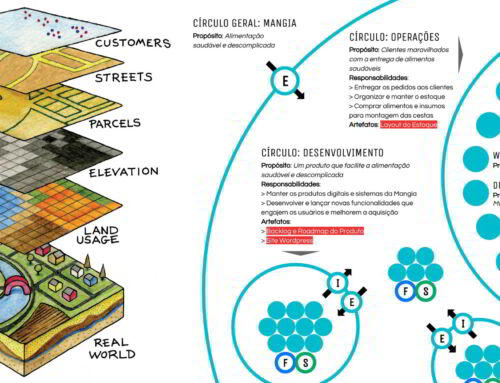“Our organization is immature.”
“We are not ready for self-organization.”
“This Scrum thing will never work here.”
“People have no maturity for management without bosses.”
– CEO (Chief Exhausted Opressor)
And so many other excuses I’ve heard since I started working with methods based on self-organization. Often this speech is just a shortcut to shorten the conversation. At other times, I think that behind these comments there are rooted beliefs about people.
Mental Models
Have you ever heard of Theory X and Theory Y? Douglas McGregor developed them in 1960 at MIT with the goal of describing two mental models of people’s motivation in an organization. Theory X is based on pessimistic assumptions about the average worker, stating that individuals are lazy (they do not like to work), have little ambition, must be given clear instructions for execution and need to be punished or rewarded according to results. Theory Y completely opposes X. In this model, it is believed that average workers are intrinsically motivated, enjoy working in the company, are ambitious and will hone their skills independent of a direct reward.
Which one is right? Both. Managers who believe in Theory X will have lazy subordinates. Managers who believe in Theory Y will have creative subordinates. The beliefs and assumptions we have influence our actions, which result in an environment that is even closer to our mental model. Remember that:
When I hear the comment “The people here do not have the maturity for this,” I feel sorry. I feel sorry because these people are not going to have the opportunity to experience an environment where everyone can shine. Perhaps many hidden talents – oppressed by the system in which they are placed – will no longer be revealed.
The system shapes behaviors
Few are proactive in an environment that does not encourage participation. Thankfully we have alternatives! In Scrum, all members of the development team are invited to organize around an established product vision. A central authority is not necessary. In Holacracy, the process of Integrative Elections creates greater opportunities for participation in the organization’s governance. Read this story:
John, a member of an organization that was adopting Holacracy, has always done a good job on the Customer Success team. But John never was on the spotlight. One day, the circle made an election for the role of Facilitator. It had never crossed his mind that he could play that role. Facilitating the meeting? John could not imagine himself doing this. During the election, John received several votes, as many believed he could play this role well (the Integral Elections are not by candidature). John was amazed and accepted the rike. Today, after a few months practicing, John is the best facilitator of the company.
This is the power of a system that encourages participation. John was a hidden potential, shy to take the first step. However, the Integrative Elections created the space that John needed.
A final message to the CEO
I prefer treating the statement “people do not have maturity” as an exception. First I believe from my heart that they have. I believe until the opposite is proven. That way I’m influencing the system in a positive way.
Many executives, exhausted by work and disbelieving people, can not make the leap of faith. Do you know anyone like this? Send this blog post to him or her :)






Leave A Comment